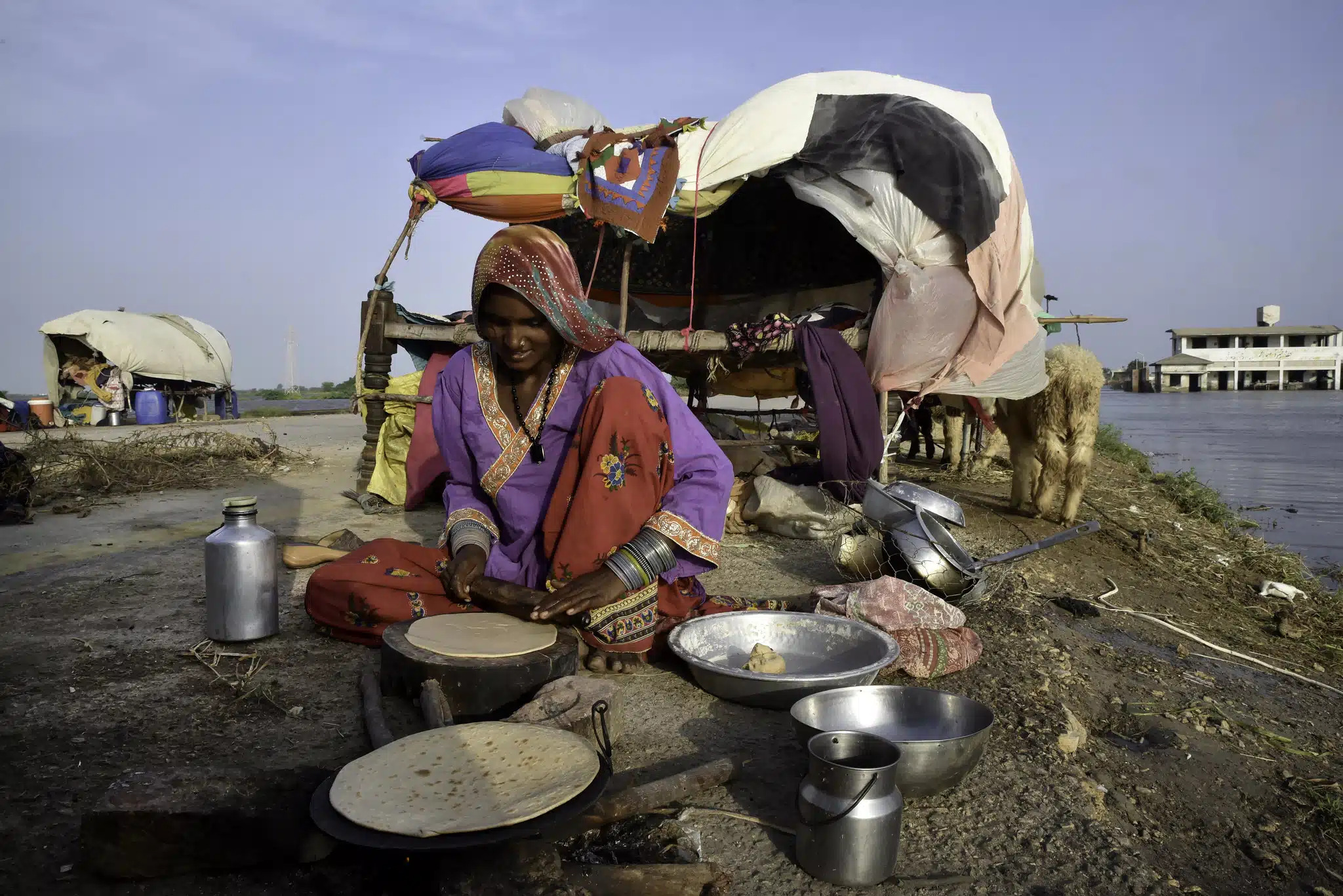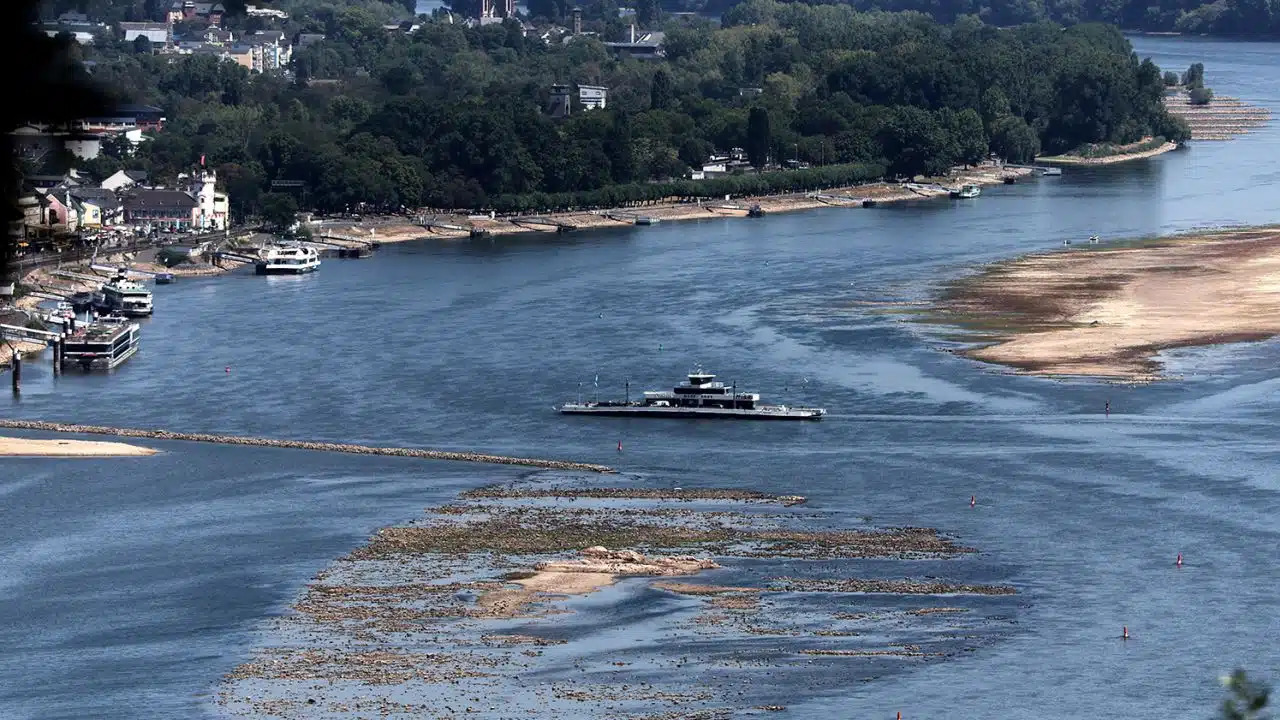
2022 was another record-breaking year. Rising pollution, extreme weather events, unprecedented heatwaves, and devastating floods, coupled with the war in Ukraine, growing inflation, and energy shortages, have contributed to a year without precedents. As life finally resumes worldwide after three years of the Covid19 pandemic, the fight against global warming is really getting started. Here are four 2022 natural disasters that show us what the future might hold for us if we don’t take rapid, drastic action.
—
2022 was a year for the record books. The WMO’s State of the Global Climate annual report said that the global mean temperature in 2022 is currently estimated to be about 1.15C above pre-industrial levels. And while temperatures kept rising, a series of natural disasters claimed hundreds of thousands of lives and displaced millions of people. River levels reached historic lows, compromising crops and halting international trade, while erratic rainfall resulted in devastating floods. Unprecedented heatwaves and droughts increased the duration and intensity of wildfires and contributed to food insecurity. The limitations of humans’ tolerance to intense heat were a topic of discussion among researchers.
While it is impossible to summarise them all, Earth.Org tried to recap some of the worst 2022 natural disasters to remind our readers of the dangers of inaction on climate change.
First on our list of 2022 natural disasters are the cataclysmic floods that affected one-third of Pakistan, the fifth most populated nation on Earth and among the most vulnerable to climate change. Despite contributing as little as 0.8% to global greenhouse gasses, the South Asian nation bears the most brunt of global warming, with experts agreeing that rising temperatures have likely increased the flood’s intensity by up to 50%.
Unfortunately, this wasn’t the first time weather catastrophes have occurred in Pakistan. In March, the country experienced a historic heatwave, with surface land temperatures in some areas crossing more than 60C, threatening millions of lives and the nation’s electricity demand and crop harvests.

Weak governance and cooperation are major barriers to Pakistan’s ability to adapt to climate change. These elements have contributed to the growth of water mafia, unauthorised buildings, and inadequate urban and rural planning. The majority of climate resilience initiatives under the former Imran Khan administration were focused on tree planting, sustainable energy, and electric vehicles. Despite all of these admirable efforts, more pressing issues like unauthorised buildings, subpar urban planning, and a lack of adequate water storage should have been more prioritised.
Climate change is warming Northern regions nearly four times faster than the rest of the planet. This, scientists warn, will trigger catastrophic weather events worldwide, from heatwaves and droughts to storms and floods.
This September has seen record ice melt in the Arctic – the kind typically seen in the middle of summer – affecting nearly 592,000 square kilometres of the ice sheet. According to scientists, we are looking at the largest melt event to occur in September in nearly four decades.
The ice sheet in Greenland, the second largest in the world after Antarctica, has melted so much during the previous ten years that the sea level has risen by one centimetre. According to a study, the global warming-trigger melting of 110 trillion tonnes of ice from Greenland alone will result in a minimum sea level increase of 27 centimetres (10.6 inches). A sea level increase of several metres seems likely due to ongoing carbon emissions, other ice caps melting, and ocean thermal expansion.
Mountain glaciers in the Himalayas and the Alps are already on track to lose one-third and half of their ice, respectively, and experts believe that the west Antarctic ice sheet has already passed the tipping point at which significant losses are unavoidable and the consequences irreversible. Beyond sea level rise, the extensive melting of the Greenland ice sheet would have long-term effects on the Amazon rainforest and weather patterns, as changes in sea water could stop the Gulf Stream ocean movement.
This summer, China, Europe as well as south-west and central US states witnessed dangerous and often unprecedented heatwaves.
Unprecedented temperatures have been experienced on several continents as a result of five distinct high-pressure weather systems that are connected by atmospheric waves and spread across the northern hemisphere. The UK broke its record for the hottest day ever, as did other places in Texas and Oklahoma, notably Wichita Falls, which on July 2022 reached a scorching 115 degrees Fahrenheit (46.1 degrees Celsius).
Wildfires have forced tens of thousands of people to flee from their homes as Europe’s heatwave brought record-high temperatures in Italy, Spain, Portugal, Greece, and France. Hungary and Italy have been blasted by high temperatures of around 100 F (almost 38C) in certain locations, while Germany had its hottest day of the year with temperatures reaching 104.5 F (40.3C) in Bad Mergentheim, a town in the Main-Tauber-Kreis district in the German state of Baden-Württemberg.
Due to record-breaking high temperatures and a long-lasting absence of precipitation, European rivers including Po in Italy and Rhine in Germany dried up, with devastating consequences on agriculture, trade, and hydropower supplies.

In China, a heatwave brought scorching temperatures across large parts of the country, with dozens of cities recording temperatures over 40C (104F) for several days straight. For the first time in nine years, the government issued a national drought alert while local authorities in Sichuan ordered power cuts to homes, businesses, and factories amid persistent blackouts. Water levels in the Yangtze river – the third-largest in the world flowing about 6,300 kilometres (3,900 miles) through China– reached dangerous lows, affecting trade, limiting drinking water supplies, and causing rolling blackouts.
On September 28, Category 4 Hurricane Ian made landfall in Florida with catastrophic fury and winds near 150 mph (241 kph), killing at least 148 people and leaving millions displaced. According to experts, it ranks as one of the strongest hurricanes on record to hit the United States.
The warming oceans caused by climate change, which gives hurricanes more energy to release through pounding winds and waves, is one of several causes that contributed to increasing Ian’s intensity. Climate experts have no doubt that global warming contributes to the slow passage of storms like Ian, allowing them more time to strengthen and cause mass destruction.
According to a 2022 study, an increasing number of tropical cyclones around the world have seen as “extreme rapid intensification,”. Another 2018 study that concentrated on the Atlantic basin discovered that the rates of intensification of the cyclones that have strengthened most quickly had accelerated, increasing by around 4mph (6.4 km/h) every decade over the last 30 years.
By discussing the regional and local impacts of climate change-induced natural disasters, we hope to raise awareness of the necessity to increase global efforts to reduce greenhouse gas emissions and guarantee a safer future to new generations.
At the same time, we are extremely grateful for the progress made in 2022 and we believe that there is still hope for the future. You can check our Earth.Org’s favourite positive environmental news stories from 2022 here.
Featured image: Florida Fish and Wildlife Law Enforcement response in the aftermath of Hurricane Ian, September 30, 2022. Photo by: FWC Photo (Flickr)